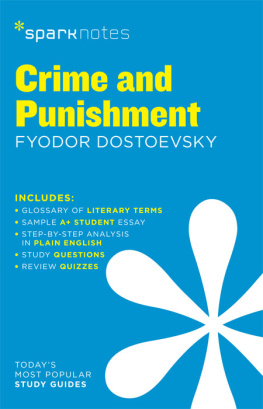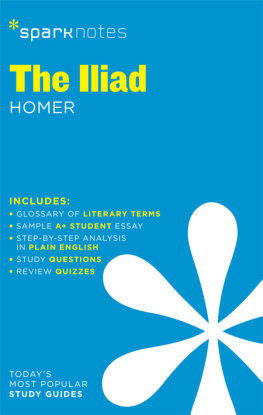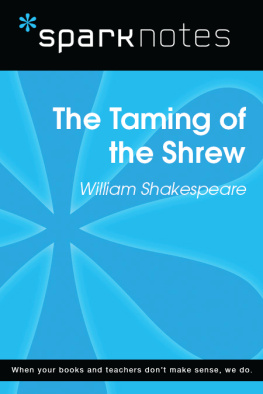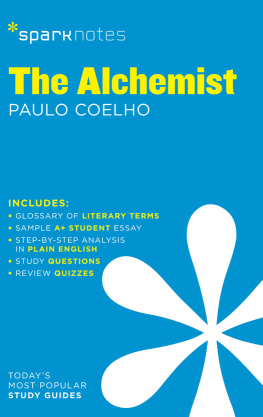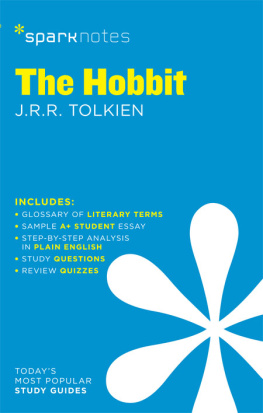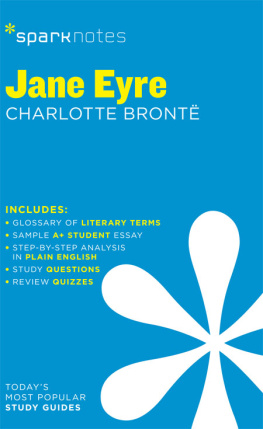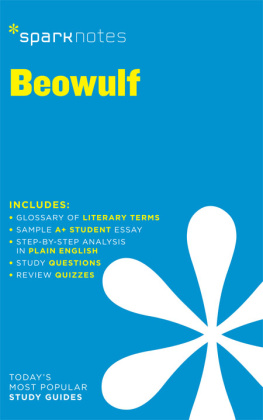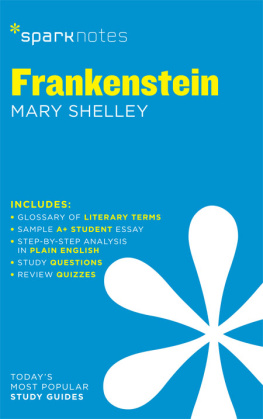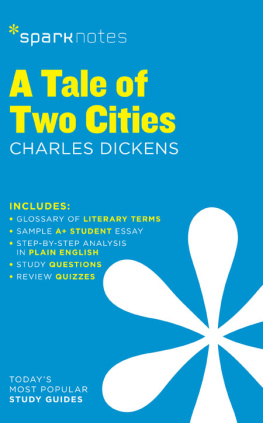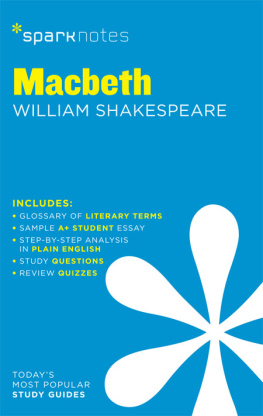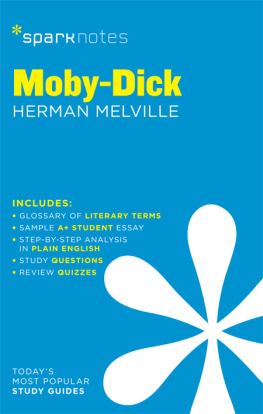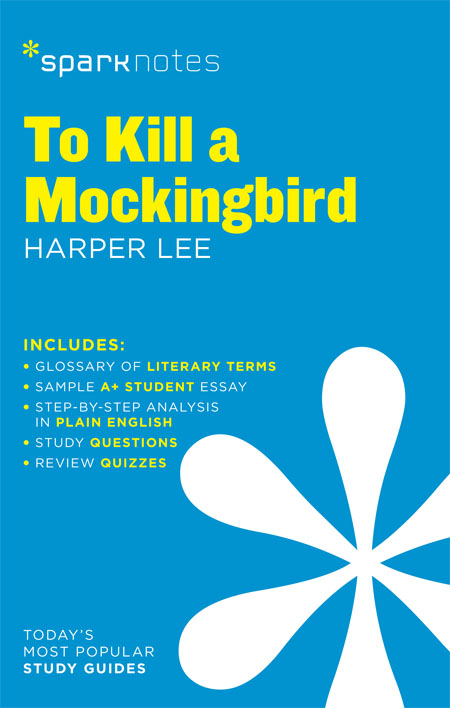To Kill a Mockingbird
Harper Lee
2003, 2007 by Spark Publishing
This Spark Publishing edition 2014 by SparkNotes LLC, an Affiliate of Barnes & Noble
All rights reserved. No part of this publication may be reproduced, stored in a retrieval system, or transmitted in any form or by any means (including electronic, mechanical, photocopying, recording, or otherwise) without prior written permission from the publisher.
Sparknotes is a registered trademark of SparkNotes LLC
Spark Publishing
A Division of Barnes & Noble
120 Fifth Avenue
New York, NY 10011
www.sparknotes.com /
ISBN-13: 978-1-4114-7193-1
Please submit changes or report errors to www.sparknotes.com/errors.
10 9 8 7 6 5 4 3 2 1
Context
N elle Harper Lee was born on April , 1926 , in Monroeville, Alabama, a sleepy small town similar in many ways to Maycomb, the setting of To Kill a Mockingbird. Like Atticus Finch, the father of Scout, the narrator and protagonist of To Kill a Mockingbird, Lees father was a lawyer. Among Lees childhood friends was the future novelist and essayist Truman Capote, from whom she drew inspiration for the character Dill. These personal details notwithstanding, Lee maintains that To Kill a Mockingbird was intended to portray not her own childhood home but rather a nonspecific Southern town. People are people anywhere you put them, she declared in a 1961 interview.
Yet the books setting and characters are not the only aspects of the story shaped by events that occurred during Lees childhood. In 1931 , when Lee was five, nine young black men were accused of raping two white women near Scottsboro, Alabama. After a series of lengthy, highly publicized, and often bitter trials, five of the nine men were sentenced to long prison terms. Many prominent lawyers and other American citizens saw the sentences as spurious and motivated only by racial prejudice. It was also suspected that the women who had accused the men were lying, and in appeal after appeal, their claims became more dubious. There can be little doubt that the Scottsboro Case, as the trials of the nine men came to be called, served as a seed for the trial that stands at the heart of Lees novel.
Lee began To Kill a Mockingbird in the mid- 1950 s, after moving to New York to become a writer. She completed the novel in 1957 and published it, with revisions, in 1960 , just before the peak of the American civil rights movement.
Critical response to To Kill a Mockingbird was mixed: a number of critics found the narrative voice of a nine-year-old girl unconvincing and called the novel overly moralistic. Nevertheless, in the racially charged atmosphere of the early 1960 s, the book became an enormous popular success, winning the Pulitzer Prize in 1961 and selling over fifteen million copies. Two years after the books publication, an Academy Awardwinning film version of the novel, starring Gregory Peck as Atticus Finch, was produced. Meanwhile, the author herself had retreated from the public eye: she avoided interviews, declined to write the screenplay for the film version, and published only a few short pieces after 1961 . To Kill a Mockingbird remains her sole published novel. Lee eventually returned to Monroeville and continues to live there.
In 1993 , Lee penned a brief foreword to her book. In it she asks that future editions of To Kill a Mockingbird be spared critical introductions. Mockingbird, she writes, still says what it has to say; it has managed to survive the years without preamble. The book remains a staple of high school and college reading lists, beloved by millions of readers worldwide for its appealing depiction of childhood innocence, its scathing moral condemnation of racial prejudice, and its affirmation that human goodness can withstand the assault of evil.
Plot Overview
S cout Finch lives with her brother, Jem, and their widowed father, Atticus, in the sleepy Alabama town of Maycomb. Maycomb is suffering through the Great Depression, but Atticus is a prominent lawyer and the Finch family is reasonably well off in comparison to the rest of society. One summer, Jem and Scout befriend a boy named Dill, who has come to live in their neighborhood for the summer, and the trio acts out stories together. Eventually, Dill becomes fascinated with the spooky house on their street called the Radley Place. The house is owned by Mr. Nathan Radley, whose brother, Arthur (nicknamed Boo), has lived there for years without venturing outside.
Scout goes to school for the first time that fall and detests it. She and Jem find gifts apparently left for them in a knothole of a tree on the Radley property. Dill returns the following summer, and he, Scout, and Jem begin to act out the story of Boo Radley. Atticus puts a stop to their antics, urging the children to try to see life from another persons perspective before making judgments. But, on Dills last night in Maycomb for the summer, the three sneak onto the Radley property, where Nathan Radley shoots at them. Jem loses his pants in the ensuing escape. When he returns for them, he finds them mended and hung over the fence. The next winter, Jem and Scout find more presents in the tree, presumably left by the mysterious Boo. Nathan Radley eventually plugs the knothole with cement. Shortly thereafter, a fire breaks out in another neighbors house, and during the fire someone slips a blanket on Scouts shoulders as she watches the blaze. Convinced that Boo did it, Jem tells Atticus about the mended pants and the presents.
To the consternation of Maycombs racist white community, Atticus agrees to defend a black man named Tom Robinson, who has been accused of raping a white woman. Because of Atticuss decision, Jem and Scout are subjected to abuse from other children, even when they celebrate Christmas at the family compound on Finchs Landing. Calpurnia, the Finches black cook, takes them to the local black church, where the warm and close-knit community largely embraces the children.
Atticuss sister, Alexandra, comes to live with the Finches the next summer. Dill, who is supposed to live with his new father in another town, runs away and comes to Maycomb. Tom Robinsons trial begins, and when the accused man is placed in the local jail, a mob gathers to lynch him. Atticus faces the mob down the night before the trial. Jem and Scout, who have sneaked out of the house, soon join him. Scout recognizes one of the men, and her polite questioning about his son shames him into dispersing the mob.
At the trial itself, the children sit in the colored balcony with the towns black citizens. Atticus provides clear evidence that the accusers, Mayella Ewell and her father, Bob, are lying: in fact, Mayella propositioned Tom Robinson, was caught by her father, and then accused Tom of rape to cover her shame and guilt. Atticus provides impressive evidence that the marks on Mayellas face are from wounds that her father inflicted; upon discovering her with Tom, he called her a whore and beat her. Yet, despite the significant evidence pointing to Toms innocence, the all-white jury convicts him. The innocent Tom later tries to escape from prison and is shot to death. In the aftermath of the trial, Jems faith in justice is badly shaken, and he lapses into despondency and doubt.
Despite the verdict, Bob Ewell feels that Atticus and the judge have made a fool out of him, and he vows revenge. He menaces Tom Robinsons widow, tries to break into the judges house, and finally attacks Jem and Scout as they walk home from a Halloween party. Boo Radley intervenes, however, saving the children and stabbing Ewell fatally during the struggle. Boo carries the wounded Jem back to Atticuss house, where the sheriff, in order to protect Boo, insists that Ewell tripped over a tree root and fell on his own knife. After sitting with Scout for a while, Boo disappears once more into the Radley house.


